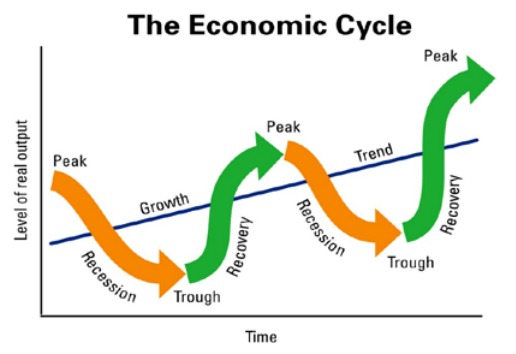When it comes to new cabinets, door frames, and baseboards, great contractors totally nail it. Can you say the same when it comes to nailing your financials? Month after month – year after year?
 Do you set revenue, total sales, operational cost, and profitability goals every year – along with 3–5-year plans as part of your vision? Do you consistently nail your profit goals (or not)? What about tracking them with a dashboard of weekly, monthly, and quarterly progress – then throttling gears up or down depending on your results? If you do – then congratulations! You are probably nailing your profits (revenue minus all fixed and variable costs) like a boss!
Do you set revenue, total sales, operational cost, and profitability goals every year – along with 3–5-year plans as part of your vision? Do you consistently nail your profit goals (or not)? What about tracking them with a dashboard of weekly, monthly, and quarterly progress – then throttling gears up or down depending on your results? If you do – then congratulations! You are probably nailing your profits (revenue minus all fixed and variable costs) like a boss!
If not, then hey, it’s a New Year! Maybe a New You? Without a doubt, it’s a New Normal. And while you might be in the Boom time of your life, how long will that last? What happens when the phone stops ringing? If you fear a slowdown or economic trough is around the corner, you’re not wrong. It’s important to prepare now. It's time to remodel your remodeling business.
Top 5 Remodeler Resolutions for Being Profitable
- Create a 3–5-year Business Strategy. We are still in a home construction expansion and growth phase – but it won’t last forever. Plan your Strategy now to weather future storms.
- Be intentional about your business goals. Set, track, and nail the business goals that get you from A to Z. If you know that fewer home builds and more kitchen remodels will yield more profits, set a quantitative goal and target your marketing to go after these clients.
- Know the difference between Strategy and Tactics. Contractors too often attempt to reach their business goals only by applying tactics, resulting in a “try this, try that” approach. Your Business Strategy involves foresight, research, and documentation into a Strategic Plan. Everyone in your firm must know and rally around that Strategy to reach your highest-level goals. Micro-strategies within the Strategic Plan are called tactics. That’s what most contractors excel at – because you are doers and builders.
 Set SMART goals. Make sure your goals are Specific, Measurable, Achievable, Relevant, and Timely. For example, replace “launch a new website next year” with “respond to 10 new remodeling customers per week through our new online contact form launched by June 30.” (The tactic is the new website that hosts your online form). Speaking of forms, Aspire has great SMART Goal templates for you to use!
Set SMART goals. Make sure your goals are Specific, Measurable, Achievable, Relevant, and Timely. For example, replace “launch a new website next year” with “respond to 10 new remodeling customers per week through our new online contact form launched by June 30.” (The tactic is the new website that hosts your online form). Speaking of forms, Aspire has great SMART Goal templates for you to use!- Learn the difference between growing revenue and growing profits. Make sure you set profit goals for each different job category. While every job type has different and unique challenges and opportunities, most remodelers use the exact same pricing strategy across all jobs. Wouldn’t it make sense that a job with higher risk would have the ability to capture a higher profit margin than a job with lower risk? For example, why would a whole home, kitchen, and bathroom remodel each have the same margin target?
Focus on Profit Margins.
Service businesses like yours – versus a product, raw material, or commodity business such as buying wood, ground hamburger, or paper clips – require a focus on profitability typically expressed in real money like “I made $300,000 in profit.”. The area to focus on most is your profit margins. That’s the percentage of the money you keep after all your fixed and variable operating costs are backed out from total revenue. Margins are expressed as a percentage like “Overall, I took away 30% profit margin,” which was $300,000 of $1 million in sales and revenue. What’s sad is that the majority of residential GCs make 10x less than this, with real average profit margins of 3%. This means they might have $30,000 left after a $1 million year when everyone and everything else is paid – including office space, equipment, and taxes.
Why is that? Well, for one thing, most contractors don’t apply enough variable and fixed operating costs to each individual job, such as your field’s crew’s portion of total pay and benefits. That is part of a job’s labor cost. It’s that level of precision critical to nailing your profit margins – and ensuring you keep more of the money you earn.
That way, your business becomes more stable to weather the Boom-and-Bust cycles in home construction. Stable margins (far different from price markups) prevent feast-or-famine paychecks or churn-and-burn hiring and firing. All of this is avoided by building a longer-term Business Strategy with quantitative SMART goals.
A good profit margin goal might read something like: “Complete 6 Kitchen remodeling projects with a sustained profit margin increase of 8-10% from efficiency improvements.”
Importantly, Aspire coaches our clients to set profit margin goals for each different job category – something that 99% of remodelers we meet do not separate out. For example, set a 20% profit margin goal for bathroom remodeling jobs versus 18% on kitchen remodels and 13% on basement remodels – say because your customer is converting it to a game room and wine bar (with a temperature-control wine cellar, of course – yes!)

Keep more of what you earn = profit margins.
Now, how will you achieve that aggressive goal? What tactical maneuvers will you employ across your ideal job mix, target marketing, sales, scheduling, labor, and budgets – so you keep more of what you earn? Because keeping more is what higher profit margins are all about.
One tactic might be targeting budget-ready customers in older neighborhoods, then geotargeting entire neighborhoods with social media, direct mail, and customer referrals (a pre-set monetary finder’s fee) near the last 10 bathroom remodels you completed.
Age-old limiting beliefs in the construction industry have taught many of you to track revenue, total sales, and job volume. The New Normal demands something quite different. It’s about taking home more from the high revenue you already earn.
The golden goose in home remodeling lies in tracking and boosting your profit margins. For 99% of the most talented remodelers and renovators we know, that means a fundamental shift in Strategy.
Strategy versus tactics
Sun Tzu, the famous Chinese battle strategist, authored a book called The Art of War. Military and business strategists worldwide still study it today, even though the manuscript was written over 1500 years ago. When it comes to building Strategy, Tzu captured it nicely when he said:
“Strategy without tactics is the slowest route to victory. Tactics without Strategy is the noise before defeat.”
Aspire knows that real victory lies in keeping more of what you earn – that’s what fixing your margins does for you (quite different from pricing markups – another topic for another time). Defeat may be taking on more jobs only to create more stress and chaos – that’s the noise. So, make a resolution to remodel your business by nailing your numbers like a boss.
Download our FREE REPORT: Business Strategy for Contractors
